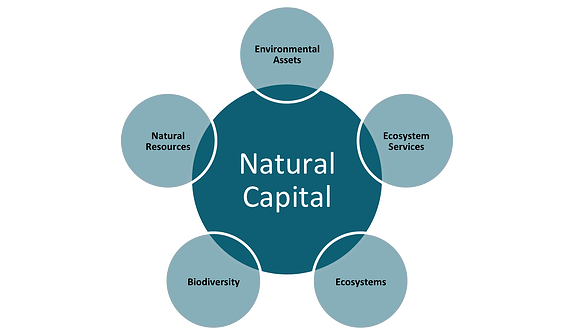What is Natural Capital and how does it link to materiality?
A recent study by PwC revealed that only two of the UK's 100 largest listed companies mentioned "Natural Capital" in their annual reports[1]. There are a number of definitions of Natural Capital. Some distinguish between ecosystems, ecosystem services, biodiversity and natural resources but broadly a consensus forms around it being an aspect of the natural environment that provides value to people.
It encompasses a number of terms and potential impacts[2]:

What is value?
Value is broadly used to quantify the importance, worth and usefulness of something. Stating that something has value for your organisation is closely associated with its materiality to the organisation. Monetary value underpins financial reporting; however the transition of a similar value approach to wider environmental impacts is in its infancy for most reporting organisations. In order to understand wider Natural Capital value it is important to look beyond the simple financial cost of using a product or resource and consider its broader upstream and downstream impacts.
Is Natural Capital valuation just “Materiality +”?
The plethora of sustainability reporting frameworks offers us a range of definitions for materiality. The scope, timeframe and stakeholder groups involved in a materiality assessment are the three critical components that vary between definitions but fundamentally materiality is just that, reporting what matters to an organisation. Valuing Natural Capital as part of a materiality assessment may require considering new stakeholder groups who are associated with the natural environmental impacts on which the organisation depends.
To find out more about, download a copy of our eBook:











